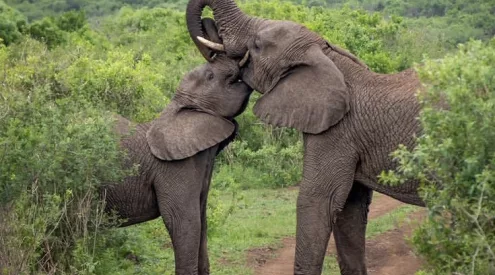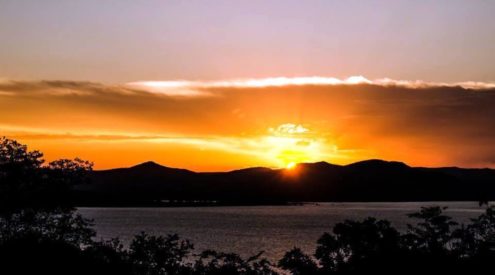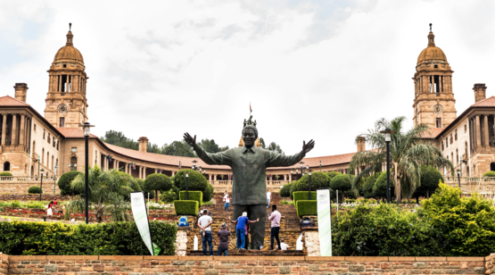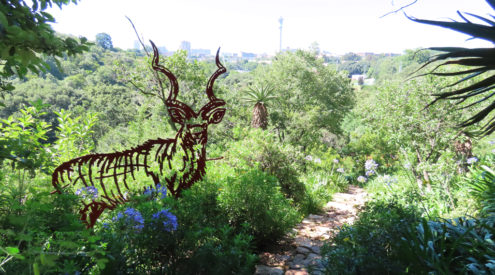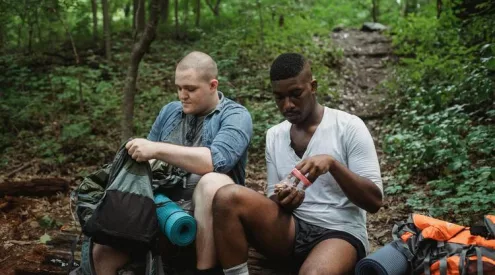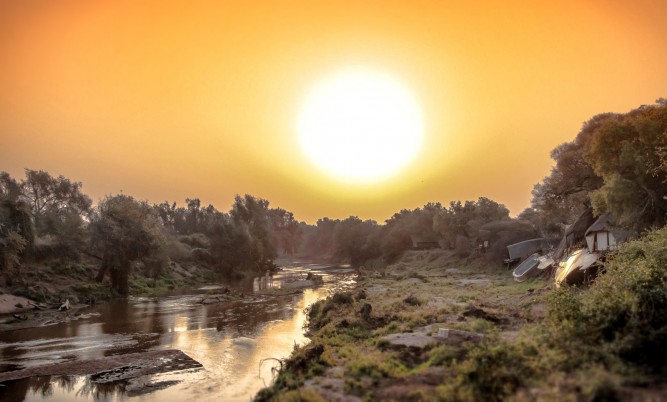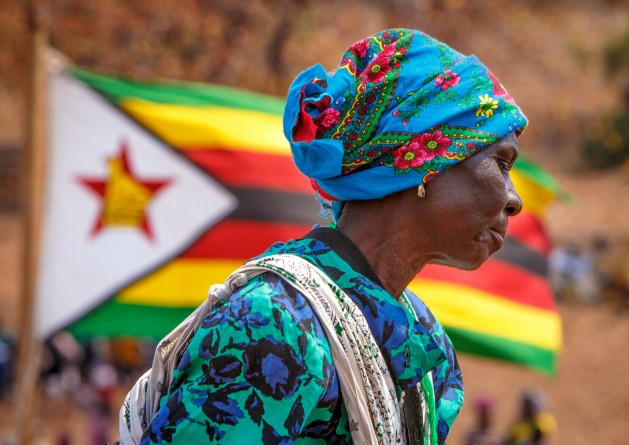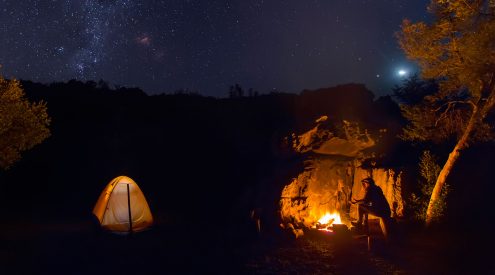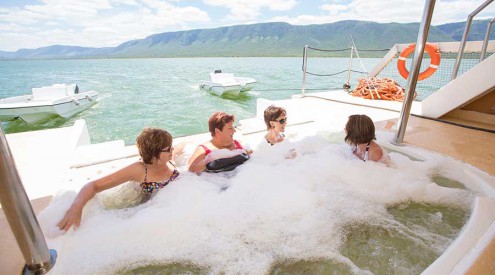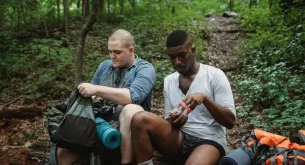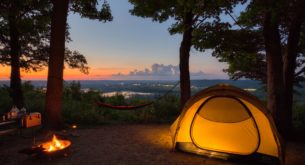The Makuleke Contractual Park, in the Pafuri region of northern Kruger National Park, is my new favourite wilderness destination. Joint-managed by the Makuleke community, the Kruger (which oversees the area’s conservation efforts), and private tourism operators, this gem of a concession sits in a narrow strip between the Luvuvhu and Limpopo Rivers, right up at the very top of South Africa’s largest and most popular park.
Between pristine lowveld bush and lush riverine forest, ridgelines bristling with baobabs rise silhouetted against the sky. Large herds of elephant and buffalo make the most of the Luvuvhu flood plain, as do leopards, which occur in some of the highest densities in southern Africa. This is big-five country certainly, but it’s bundled up in a rich, compact and varied ecosystem, multiple ecosystems really – a paradise not just for those in search of the larger animals, but also for birders and botanists and lovers, like me, of intriguing canyons and fever tree forests at dusk.
Editor’s note (2017): Please note that the booking information below is out of date. Pafuri Trails Camp is no longer operated by Wilderness Safaris. For latest information please visit: returnafrica.com
Trails camps are the best way to experience the Pafuri
2013 has been a hard year in the Pafuri, with record-breaking floods destroying the Pafuri Camp back in January. It has yet to be rebuilt. Although undoubtedly a disaster for the camp operators and the community for whom the camp is a major source of revenue, the flooding has at least had no negative impact on the region’s walking trails and these are now the best way to experience this wonderful area.
With all the camps and training facilities rebuilt and running at full capacity, the maximum number of available beds would still only be 120 at any one time. The Pafuri Camp will be rebuilt, but while it remains out of action that number is down to just 52, and in a total area of roughly 24,000 hectares it really feels like you have the place all to yourself.
Wilderness Safaris, who own the Pafuri Camp and have the largest private investment in the concession, also operate the walking-safari dedicated Luvuvhu Trails Camp, from which excursions along the Luvuvhu River, up Lanner Gorge and into the nook of Crook’s Corner have been operating since before the flooding. The Trails Camp accommodates a maximum of eight guests for three nights, taking two groups twice a week from April to October. Although the season is now drawing to a close, this is an excellent time to book for 2014 and take advantage of what must now be the least touristed, high-density wildlife area in South Africa.
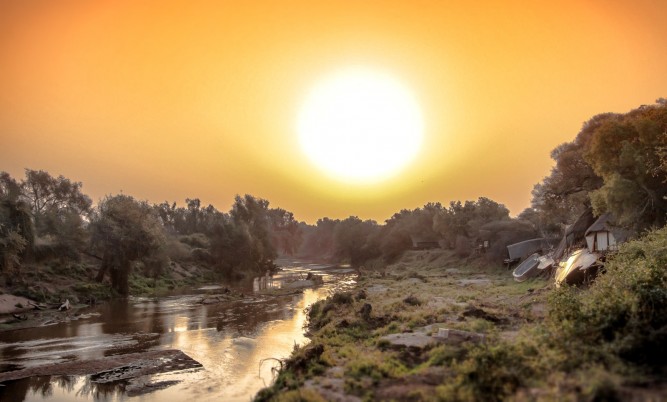
What's left of Pafuri Camp after the floods earlier this year. The water level came up a metre over the main deck, still in tatters on the right of the shot.
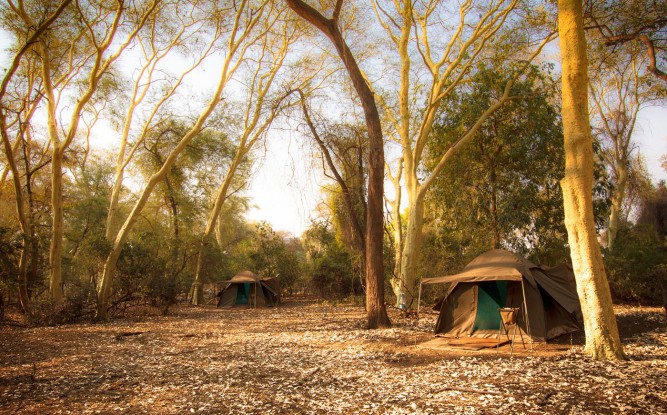
The Mapimbi Trails Camp on the south bank of the Limpopo River. Visitors are usually based at the Luvuvhu camp and are then driven to this region to explore Crook's Corner on foot.
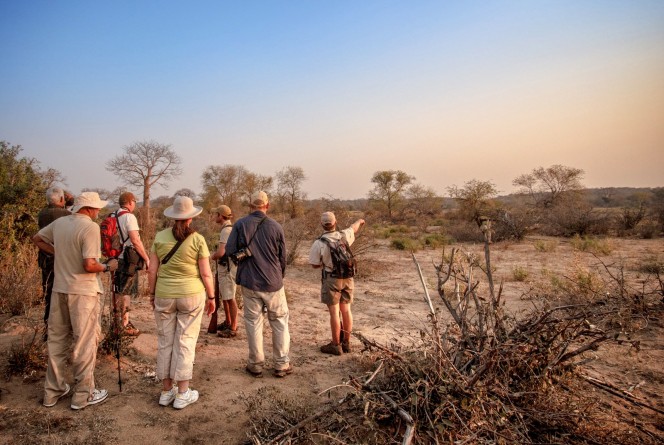
Wilderness Safaris provides knowledgeable guides and the Pafuri the spectacular scenery.

Buffalo are one of the most dangerous animals to encounter on foot.
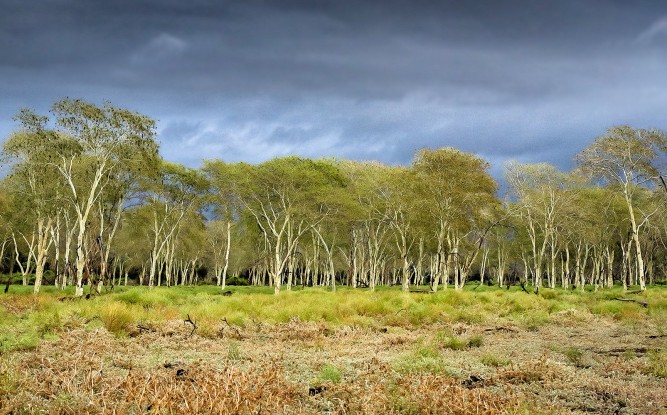
The first of the summer rains gathers over the Fever Tree forest near Crook's Corner
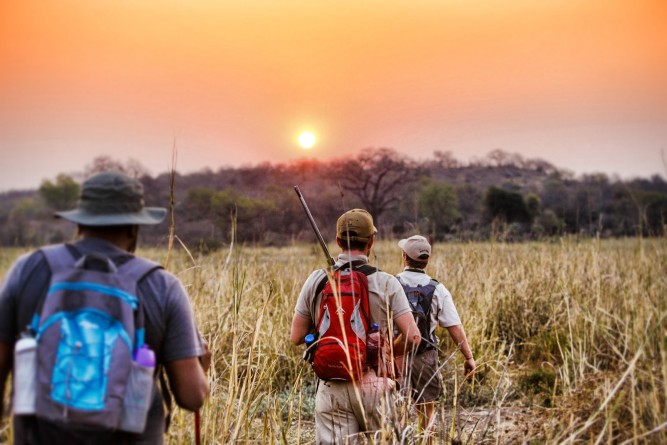
The guides take the lead through the long grass.
A, hopefully, inaugural crossing into Zimbabwe
2014 may also bring other exciting developments. As part of a concerted effort to create an environment more conducive to conservation, Wilderness Safaris have been interacting directly with Zimbabwean officials and the Shangaan communities across the border with the long-term aim of establishing a regular tourist route over the Limpopo. In September this year they managed their first tentative steps down what they admit could be a long and difficult road, but one which they hope could provide much needed revenue for communities on both sides of the border. With revenue comes a belief in eco-tourism ventures in general, and the hope is that by bringing more land into protected parks, the larger goals behind the Great Limpopo Transfrontier Park will more likely be realised, allowing both animals and tourists to travel more freely between Kruger and the Gonarezhou National Park beyond.
These first few legitimate steps were very much a proof-of-concept, and it’s going to require immense effort and good will on both sides of the border to make an established crossing a reality. Bureaucratic red tape and multiple levels of community coordination made for quite considerable organisational challenges. However, as an opportunity for paying guests to experience the Sengwe region’s annual Shangaan Cultural Festival, and for the leaders of this community to see eco-tourism in action, it has to be considered a major milestone and a success. 2014 will hopefully see a repetition of the transit and with further success we may have a more established route in the not too distant future.

Not yet a regular option open to the public, but foot crossings into Zimbabwe may be possible in the next couple of years
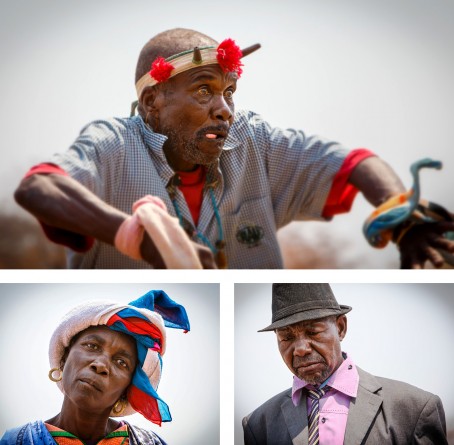
Some faces from the Shangaan festival in Zimbabwe
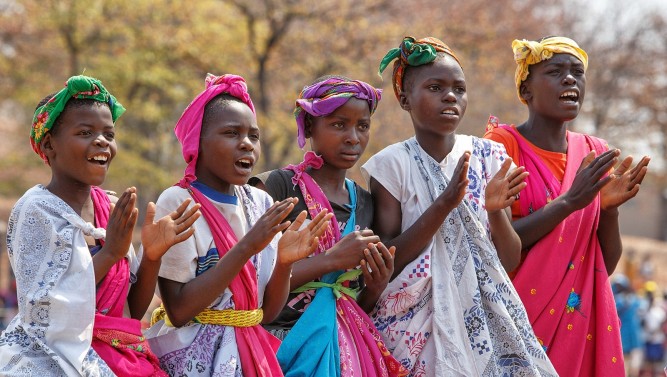
Children singing at the Shangaan festival in Sengwe
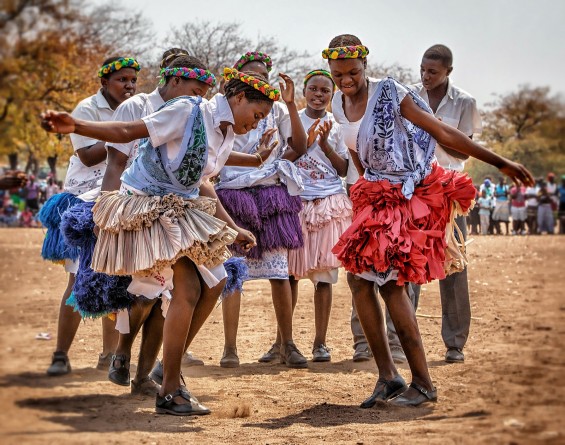
Traditional dancing at the Sengwe Shangaan festival
Editor’s note (2017): Please note that the booking information below is out of date. Pafuri Trails Camp is no longer operated by Wilderness Safaris. For latest information please visit: returnafrica.com
A bit more on the Luvuvhu Trails Camp and how to book
There is currently no established walking trail from South Africa into Zimbabwe … not a legal one anyway. But if you’d like to explore the beautiful Pafuri / Makuleke concession on foot, here’s how.
2014 Rates
R 4 134.00 per person per trail (three nights). This includes all drives, walks, purified bole-hole water, snacks and meals. Park entrance fees and bar drinks not included. The camp runs on an honesty bar policy.
Extras such as drinks can be paid for by cash, MasterCard, Visa, Rand Travellers Cheques and foreign currency (USD, Euro or GBP). Cheques and debit cards are not accepted.
All guests driving into the Kruger National Park need to pay Kruger’s daily conservation fees at the gate when they enter. From 1 November 2013 to 31 October 2014 conservation fees will be R62.00 for SA citizens, R124.00 for SADC nationals, or R248.00 for foreign visitors. Visa and Mastercard are accepted at the gates. (More information on SANParks’ tariffs here).
For Wilderness Safaris guests travelling into Kruger via the Pafuri or Punda Maria gates, only one day’s conservation fee applies for the duration of the trail. If you are staying in the park either before or after your trail you will have to pay the conservation fees for any extra days you spend in the park.
Seasonality
01 April – 31 October. Trails run from Friday to Monday and Monday to Thursday.
About The Luvuvhu Trails Camp
Wilderness Safaris’ Luvuvhu Trails Camp is situated in a sandy clearing on the northern banks of the Luvuvhu River. Tall tress provide ample shade and elephants and other large game are a common sight from the camp’s comfortable couches. There are no fences and animals may pass freely through the camp at any time.
The trails camp has 4x two-man canvas dome tents, each with it’s own ‘en suite’ chemical toilet. Each tent has two single beds with towels, pillows, duvets and sheets provided. The camp can accommodate a maximum of 8 guests. There is no electricity, but hot bucket showers are available. Lighting at night is by means of paraffin lamps, small solar lights and a large central campfire. Pocket/head torches are recommended. There is no laundry service available.
Age limit
There is an age limit of between 16 and 65 years. Guests over the age of 65 years may be considered if they can supply a medical certificate from their physician.
Typical daily activity schedule
• Early/pre-dawn wake up call
• Light breakfast: cereals, fruit, yoghurt, tea or coffee
• Morning walk: distance and duration may vary, but can be up to 15 or 16 kilometres or 7 to 8 hours
• Late morning/midday: in camp for brunch/lunch and relaxation
• Mid-afternoon to sunset: walk or drive
• Evening: warm showers, followed by snacks and drinks and a three-course dinner
Temperature & Climate
The concession has mild winters from May to September with occasional chilly evenings. Day-time temperatures during April and late September / October can be over 35oC.
Driving Times
To / from:
Phalaborwa airport: ± 5 hours
Timbavati camps: ± 5.5 hours
Johannesburg Airport: ± 6.5 – 7 hours
Nelspruit: ± 6 hours
Contact details and to book
Tel : +27(0)11 807 1800
Web: www.wilderness-safaris.com
Also see: Find the latest reviews on accommodation in Kruger here



